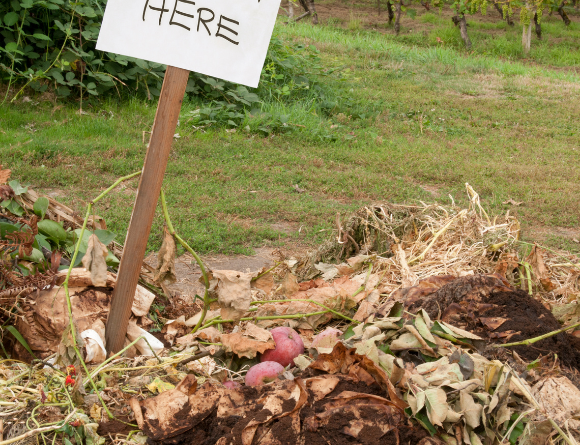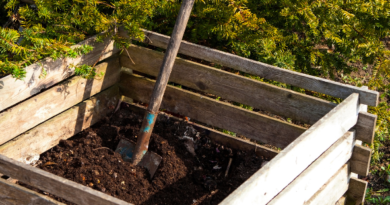How To Manage Community Waste Through Composting
Composting takes place at many levels and different sizes and techniques. Large-scale centralized facilities to serve communities have the potential to divert significant quantities of organic waste from landfills. Composting at a community or neighbourhood level yields many benefits. Improved local soils, employment creation, greener spaces, skill improvement and even reduced garbage collection costs are just some examples of the benefits.
Community-based composting is an ideal form of recycling and can be a great source for households, community gardens and even schools to benefit from the finished compost.
Community Participation and Education
The involvement of community members in the composting process allows them to appreciate the value and benefits of their efforts. Seeing up close how their food waste can turn into a useful resource is great motivation for the overall good of the exercise.
Education on how to separate waste, and use the finished compost will ensure the production is efficient and the end product of good quality.
Composting Systems
There are several factors to consider when it gets to selecting the most suitable technique for the community compost.
1) Location
The location has to be the first thing to consider when choosing to compost as a community. In Kenya, people live in estates and apartment blocks (flats). The composting location should be allocated to a convenient spot for everyone to access and instructions clear enough for people to place their waste correctly and avoid double work of sorting.
2) Space: How much space is available for the project. If the area is space-constrained, the community can choose to ‘bokashi’ their waste and only put their bokashi compost in the compost bin for finishing. This method requires commitment and discipline by all members. An alternative would be for the community to hire a person whose role is to bokashi the waste in bins.
3) Time: Compost takes the time that it takes to go from waste to finished compost. There is no guarantee of time and it all depends on the waste.
Composting Systems
There are many types of composting systems, large and small, and everything in between. Regardless of size, well managed composting systems share a few components. Adequate microorganisms are necessary to digest organic materials, as well as adequate oxygen, adequate moisture, adequate food for microorganisms (that is, a balanced carbon to nitrogen ratio), diversely sized food particles that provide pore space for oxygen to travel, and an adequate volume of material to best allow the microbial population to grow and thrive. Food scraps represent materials high in nitrogen; thus, any food scrap composting program must find adequate supplies of carbon-rich materials such as wood chips, straw, leaves, and paper. In addition, compost needs time and space to stabilize and mature after an initial phase, typically characterized by high temperatures, and frequent monitoring and management.
Several basic types of composting configurations are used by community-scale and farm-scale operations:
1) Turned windrow composting

This is an elongated pile that is turned or rolled from the side. Windrows are suitable for farmlands and open plots. For the windrows to be effective, the site needs dedicated teams to turn and manage the compost piles.
2) Bin systems

Container-based bins can be plastic or wood and take different sizes and shapes. Many of the systems designed for backyard use are roughly the size of a garbage can and may look like a tall box. They require the users to aerate the contents by some means, either dumping out everything and turning it back inside, or using a pitchfork or specialized auger on the inside. Materials in bins with volumes less than 4ft x 4ft x 4ft’ will not heat up to the 120-150 degrees F considered optimal for well-managed systems. The bin system is a good choice for a community-based site because it is easy for inexperienced or untrained volunteers to use. Once a bin is full, it is considered a “batch” and no new material is added to it unless the recipe needs adjusting. Each batch is rotated to the next bin, which is typically how the pile is turned. It is common to have three bins, with the first bin being the place where fresh material is added. Once the first bin is full, a batch is done, and it gets turned into the second bin, and then into the third bin in a constant succession based on the rate of input.
3) Aerated static piles
Aerated static piles (ASP) are compost piles with perforated pipes or ductwork underneath that are actively aerated with blowers to pull (negative aeration) or push (positive aeration) fresh air through the material. The ductwork distributes airflow evenly throughout the material. Controls such as timers and temperature sensors are used to operate the fans, which supply fresh oxygen to microbes as well as cool the material if need be. ASP systems can be small- or large-scale and can be custom-built or purchased as fully engineered systems. There are significant benefits that can come with ASP systems and, as is the case with more complex composting systems, a significant learning curve as well. Operators find temperature and moisture control to be some of the most challenging factors to manage, which is why some turning is still advisable.
4) Vermicomposting
Also known as worm composting, it involves special species of worms decomposing organic materials into rich humus. Eisenia fetida, commonly called red wigglers, is the most popular species of worm for vermicomposting.
These systems, which are not mutually exclusive and can be used in combination with each other
Note: this guide is not intended as a manual on the art and science of composting, or as a comprehensive evaluation of the myriad systems available. We recommend all community compost sites have volunteers and operators trained in composting techniques.




